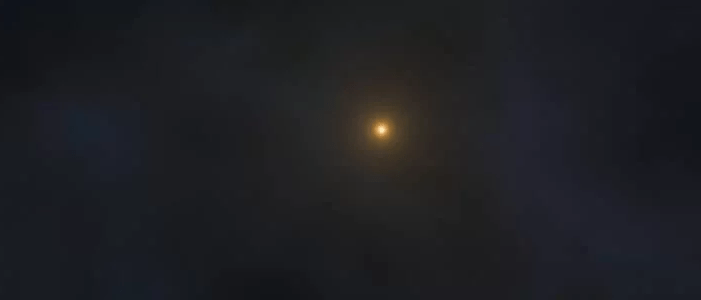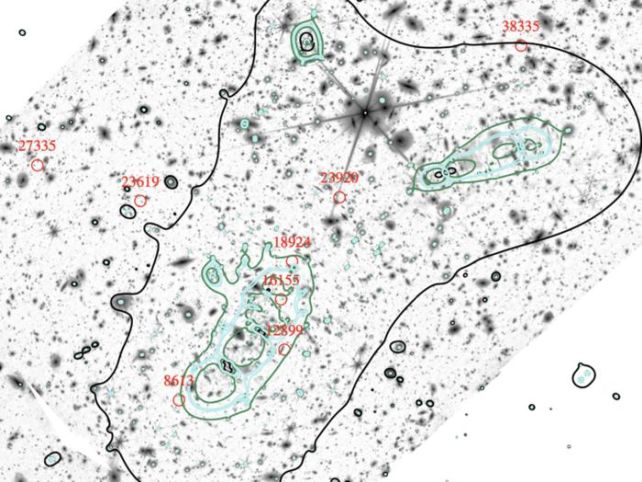Scientists learn what turned on light at the dawn of time
- March 2, 2024
- 0
We finally know what brought light to the dark and formless void of the early universe. According to data from the Hubble Space Telescope and the James Webb
We finally know what brought light to the dark and formless void of the early universe. According to data from the Hubble Space Telescope and the James Webb

We finally know what brought light to the dark and formless void of the early universe. According to data from the Hubble Space Telescope and the James Webb Space Telescope, the sources of free-flying photons in the early hours of the cosmic dawn were small dwarf galaxies that burst into life, dispersing the dark hydrogen fog that filled intergalactic space.
“This discovery reveals the vital role that extremely faint galaxies played in the evolution of the early universe,” says astrophysicist Iryna Chemerynska from the Institute of Astrophysics in Paris.
“They produce ionizing photons that transform neutral hydrogen into ionized plasma during cosmic reionization. This underscores the importance of understanding low-mass galaxies in shaping the history of the universe.”
At the beginning of the universe, minutes after the Big Bang, space was filled with a hot, dense fog of ionized plasma. No amount of light could penetrate this fog; The photons would scatter on the free electrons floating around, effectively turning the universe dark.
About 300,000 years later, as the universe cooled, protons and electrons began to combine to form neutral hydrogen (and some helium). Longer wavelength light could penetrate this neutral medium, but there were very few light sources that could create it. However, the first stars were born from this hydrogen and helium.
These early stars emitted radiation strong enough to strip electrons from their cores and reionize the gas. However, by this time the universe had expanded so much that the gas was dispersed and could not prevent the spread of light. About 1 billion years after the Big Bang, the end of the period known as the cosmic dawn, the universe was completely reionized. And yes! The light was on.
But because there was so much darkness in the cosmic dawn, and it was so dim and distant in time and space, it was difficult for us to see what was there. Scientists believed that the sources responsible for most of the clearing must be powerful; for example, supermassive black holes, whose accretion produces bright light, and large galaxies undergoing star formation (baby stars produce abundant ultraviolet light).
JWST was specifically designed to peer into the cosmic dawn and try to see what lurks there. He was very successful in revealing all kinds of surprises about this critical period in the formation of our universe. Surprisingly, telescope observations now show that dwarf galaxies are a major player in reionization.

An international team led by astrophysicist Hakim Atek of the Paris Institute of Astrophysics consulted JWST data on the galaxy cluster called Abell 2744, which was confirmed by Hubble data. Abell 2744 is so dense that space-time bends around it, forming a cosmic lens; The distant light coming to us from this space-time is magnified. This allowed researchers to see small dwarf galaxies near the cosmic star.
They then used JWST to obtain detailed spectra of these small galaxies. Their analysis showed that not only were these dwarf galaxies the most common type of galaxy in the early universe, they were also much brighter than expected. In fact, the team’s study shows that dwarf galaxies outnumber large galaxies by a factor of 100 to 1, and their total output is four times the ionizing radiation normally estimated for large galaxies.
“Together, these space power plants emit plenty of energy to get the job done,” says Atek. “Despite their small size, these low-mass galaxies are powerful producers of energetic radiation, and their excess during this period is so great that their collective impact could change the entire state of the universe.”
This is the best evidence of the power of reionization, but there is still much work to be done. The researchers looked at a small area of the sky; They need to make sure that their sample is not just an anomalous cluster of dwarf galaxies, but one that is representative of the entire population at the beginning of space.
They plan to examine more cosmic lensing regions of the sky to obtain a broader sample of early galactic populations. But just in this example, the results are incredibly exciting. Scientists have been searching for the answer to reionization as we know it. We are finally on the verge of clearing the fog.
“We have entered uncharted territory with JWST,” says astrophysicist Temiya Nanayakkara of Swinburne University of Technology in Australia. “This study opens up more exciting questions we need to answer as we try to map the evolutionary history of our origins.”
Source: Port Altele
As an experienced journalist and author, Mary has been reporting on the latest news and trends for over 5 years. With a passion for uncovering the stories behind the headlines, Mary has earned a reputation as a trusted voice in the world of journalism. Her writing style is insightful, engaging and thought-provoking, as she takes a deep dive into the most pressing issues of our time.